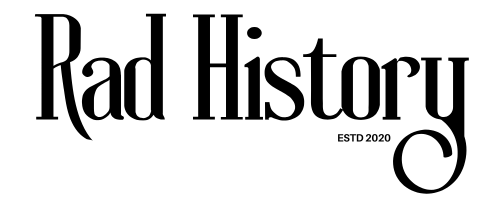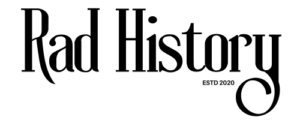Are you building a successful career and socking away cash for retirement—only to find out that your higher income might later boomerang into steeper healthcare costs? Welcome to the weird world of IRMAA, short for Income-Related Monthly Adjustment Amount. It’s a fancy acronym that translates to one thing: if you make “too much” money in retirement, your Medicare premiums get a surcharge. That’s right—doing well financially could mean paying more for the same healthcare benefits others get at a lower price.
For a generation raised on side hustles, compound interest calculators, and FIRE (Financial Independence, Retire Early) blogs, IRMAA can feel like a penalty for planning ahead. But it’s real, it’s growing, and it could hit you squarely in your 60s—even if that feels like a century away.
What Is IRMAA, Exactly?
IRMAA is a premium surcharge added on top of your standard Medicare Part B and Part D premiums if your income exceeds certain thresholds. It kicks in once your Modified Adjusted Gross Income (MAGI) crosses the designated annual income levels set by the government.
And here’s the kicker: these income thresholds aren’t indexed to inflation. That means more people—including successful millennials—will fall into IRMAA territory over time, simply because wages, investments, and inflation keep inching upward.
How IRMAA Works: The 2025 Brackets (Spoiler: They’re Not Cheap)
Let’s get specific. As of 2025, the standard Medicare Part B premium is around $181 per month. But if your MAGI two years prior was above $103,000 (single) or $206,000 (joint), IRMAA adds extra charges.
Here’s a rough breakdown of how it scales.
- Income below $106,000 (single) / $212,000 (joint): Standard premium (~$181/month)
- $106,001–$133,000 (single) / $212,001–$266,000 (joint): + ~$74/month
- $133,001–$167,000 (single) / $266,001–$334,000 (joint): + ~$185/month
- $167,001–$200,000 (single) / $334,001–$400,000 (joint): + ~$295.90/month
- $200,001–$500,000 (single) / $400,001–$750,000 (joint): + ~$406.90/month
- Over $500,000 (single) / $750,000 (joint): + ~$443.90/month
Now double that if you have a high-income household with two people paying premiums. Oh, and don’t forget: Part D prescription coverage also comes with IRMAA surcharges.
Why Millennials Should Care Now
Sure, 60-something sounds like it’s forever away. But IRMAA uses income from two years prior. So if you retire at 65, the government is looking at what you earned at 63—when you might still be killing it professionally, cashing out stock options, or selling a rental property.
The more successful your career, the higher your risk of IRMAA sneaking up on you.
It also matters for other reasons.
- Roth conversions (done right) can reduce taxable income later
- Selling a business in your 60s could spike your MAGI
- Taking RMDs (required minimum distributions) from traditional IRAs adds to your income, even if you don’t need the cash
Translation: even if you retire “modestly,” the decade before could load you with IRMAA penalties unless you plan carefully.
The Income You Didn’t Know Counts
Don’t assume only salaries trigger IRMAA. The formula takes into consideration other factors you might not even know about.
- Wages and self-employment income
- Dividends and interest
- Capital gains (hello, appreciated stock sales)
- Withdrawals from traditional IRAs or 401(k)s
- Rental property income
- Even Social Security if it’s taxable
Yes, even that “one-time” event like selling your startup or offloading that second home can push you into IRMAA land.
Smart Moves to Dodge (or Soften) IRMAA
The good news? With some financial finesse, you can often manage your income profile so IRMAA doesn’t bite harder than necessary.
- Use Roth IRAs and Roth 401(k)s while you’re younger. Distributions from Roths don’t count toward IRMAA calculations.
- Start converting traditional retirement accounts to Roths slowly in your 50s or early 60s. This raises taxes now but reduces taxable income later.
- Delay Social Security until full retirement age or later, avoiding early withdrawal taxes and IRMAA-triggering income.
- Distribute large capital gains earlier. Selling assets before Medicare age? Smart move. Spread big income years out to stay under thresholds.
- Watch those RMDs. Once you hit your 70s, required distributions can cause surprise surcharges. Talk to a planner about Qualified Charitable Distributions (QCDs) as a workaround.
IRMAA Appeals Are a Thing—But Don’t Count on Them
Had a big income year due to something like selling a house, getting a severance package, or cashing in retirement funds early? IRMAA doesn’t care about your motives—it just looks at the number.
You can appeal IRMAA if your income drop is due to a life-changing event.
- Retirement
- Divorce
- Death of a spouse
- Loss of pension income
But the process is paperwork-heavy and doesn’t always end in your favor. So, while it’s possible to contest a surcharge, don’t make it your main strategy.
IRMAA, Inflation, and the Creep
One of the most overlooked problems with IRMAA is what economists call “bracket creep.” Because IRMAA thresholds are largely fixed, normal wage growth and investment returns can push more people into higher brackets over time—even if they don’t feel “rich.”
This is where younger earners need to get proactive. The sooner you understand how retirement income will be taxed and surcharged, the more power you have to shape your future.
IRMAA and the FIRE Crowd
If you’re part of the FIRE (Financial Independence, Retire Early) tribe, IRMAA planning is doubly important. Why?
- You may be pulling from investments or tax-deferred accounts in your 50s and 60s
- You might have higher MAGI in early retirement due to business sales or investment income
- You’ve got more time to make tax-efficient decisions (like Roth conversions or tax-loss harvesting)
In short: those retiring early are just as likely—if not more so—to fall into the IRMAA trap.
Premium Planning Pays Off
Like most things in personal finance, the magic is in the planning. Understanding how IRMAA works today gives you more control tomorrow. It’s not about being afraid of success or income—it’s about being strategic with timing, account types, and withdrawals.
Even if you’re not planning on retiring anytime soon, the building blocks you lay now—Roth contributions, tax diversification, and flexible income streams—can make a big difference decades down the line.
The Surcharge You Didn’t See Coming
IRMAA might not be on your radar yet, but it’s coming for your future premiums if you’re not careful. For millennials aiming for financial independence, high-earning careers, or early retirement, this surcharge is one of those sneaky details that can quietly chip away at your planning.
Learning to play the long game—on your terms—means spotting the IRMAAs before they show up on your bill.






